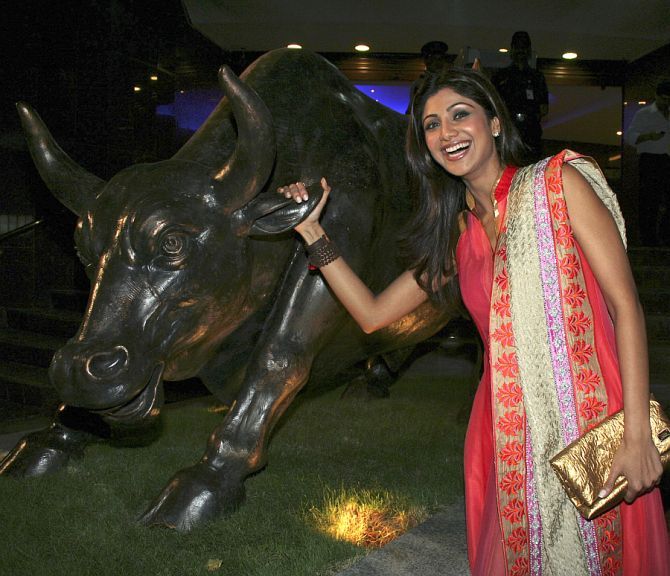 Adjusted for the dollar, the Sensex is at a lower level for foreign investors than in January 2008.
Adjusted for the dollar, the Sensex is at a lower level for foreign investors than in January 2008.
Currently, the BSE Dollex 30, an index that looks at Sensex returns adjusted for changes in the dollar, is at 3,654.87, significantly lower than its peak of 4,365 on January 8, 2008.
To touch its all-time high, the Sensex will have to rise another 710.13 points, or 19.42 per cent. Without factoring in the rupee-dollar exchange rate, the index has been touching new all-time highs repeatedly.
On Thursday, it closed at 27,112.21, about 27.84 per cent more than its January 2008 high.
The National Stock Exchange’s Defty Index (showing the Nifty adjusted for the dollar) is 17 per cent off its highs.
The difference between the two indices is because of the difference between the rupee-dollar exchange rates during the periods — while the rupee stood at 39.27 a dollar in January 2008, it now stands at 60.84, a fall of 54.92 per cent.
While the fall in the rupee makes Indian stocks cheaper for fresh money, it erodes the gains of those who had been invested in India at that time. An investment of Rs 100 in 2008 is now worth only about Rs 80, despite the market’s recent gains.
This, however, isn’t likely to deter foreign investors, experts say. “I don’t think the primary driving factor for new investors will be currency because it is difficult to predict currency levels with any degree of certainty through a three-five-year period. Currently, the overall trajectory for the currency is expected to be stable, with a bias towards appreciation due to the foreign direct investment expected to come into the country and the government’s focus on exports. This should act as a tailwind for investors--they will benefit from both gains in underlying equity holdings, as well as from the currency’s rise,” said Rajesh Cheruvu, chief investment officer (India), Royal Bank of Scotland.
Rikesh Parikh, vice-president (institution corporate broking), Motilal Oswal Securities, too, said the depreciation since 2008 wouldn’t deter foreign investors. “The difference between then and now is there is a fair degree of stability in the government. Also, there is a great deal of confidence in the Reserve Bank of India governor, and the currency is more stable. Typically, investors factor in five-eight per cent depreciation into their calculations, at a time when inflation and interest rates are so high. Unless it is far in excess of these figures, it shouldn’t be a problem,” he said.
This year, foreign institutional investors have been net buyers in Indian equities by about $14.1 billion. These foreign flows are expected to remain strong, according to Karvy Stock Broking’s ‘India Equity: Diwali Strategy’ note.
A September 12 Kotak Securities strategy report authored by Saifullah Rais said India remained on the radar of US investors, as well as those from other countries. “Now, India makes up 1.9 per cent of the (American) equity portfolio, faring better than its emerging market peers such as Brazil, Mexico and Russia. We believe growing interest in Indian equities from countries such as Australia, the Netherlands and Norway will help diversify India’s foreign investor base and mitigate risks associated with tighter US monetary policies,” it said.









